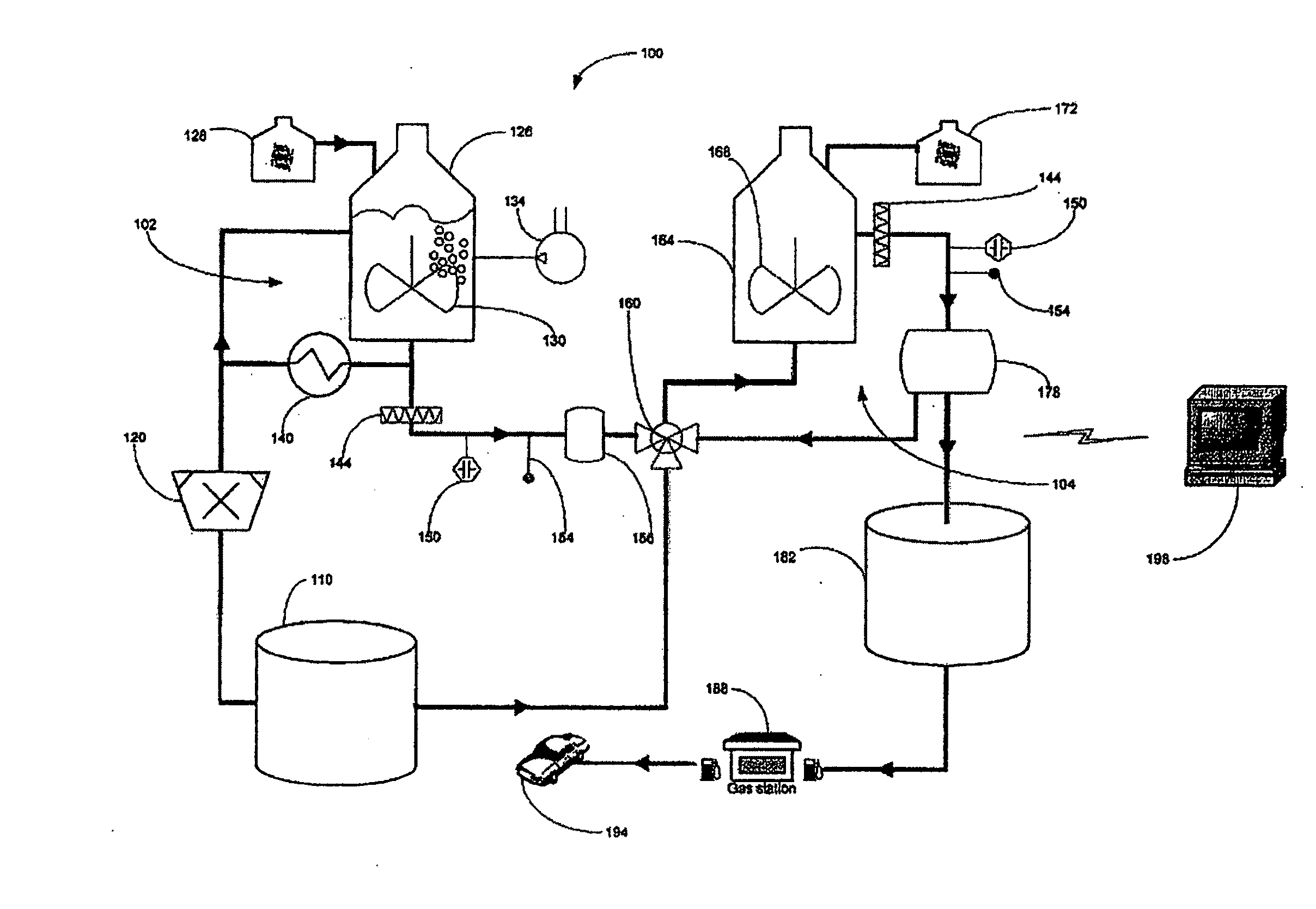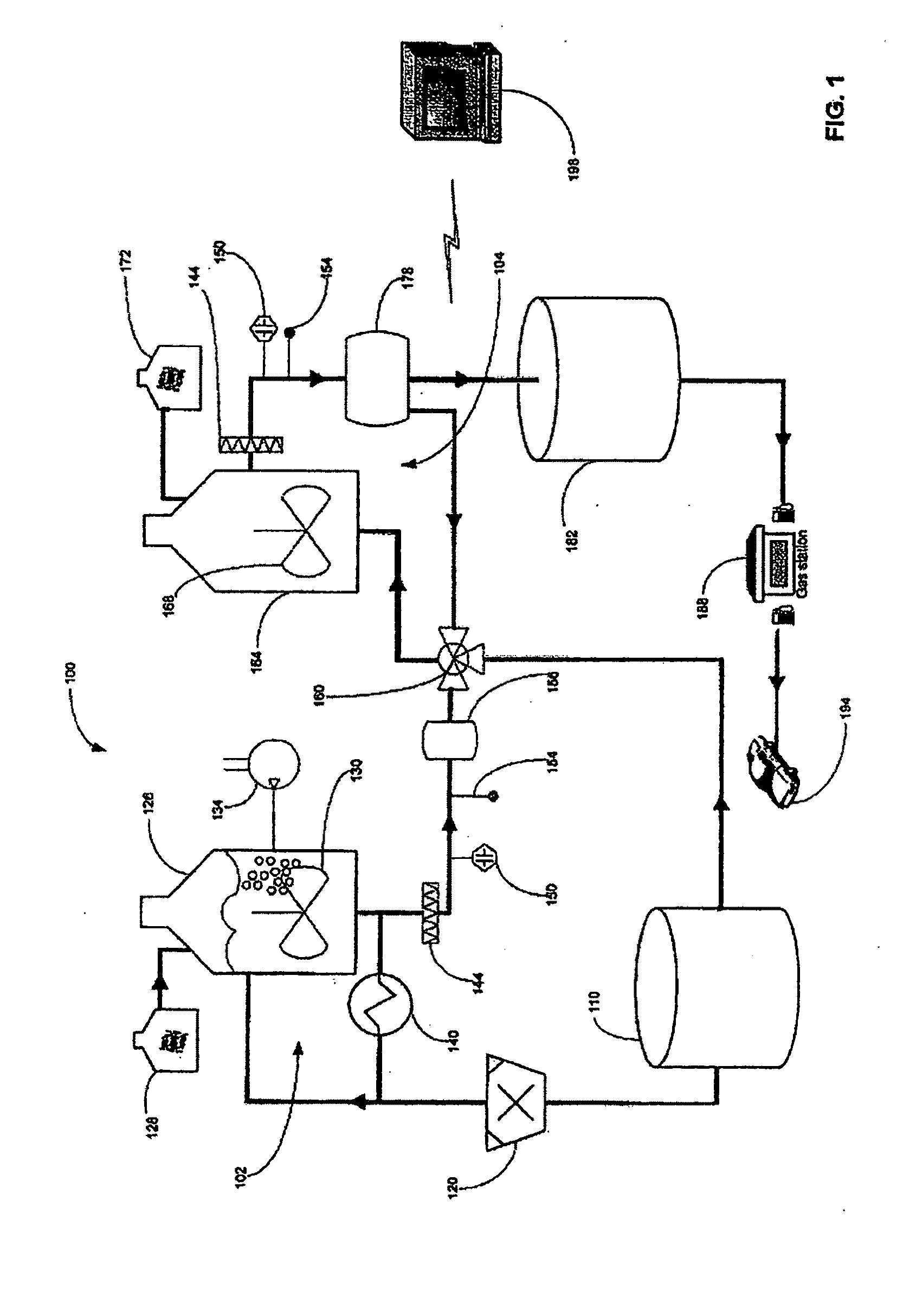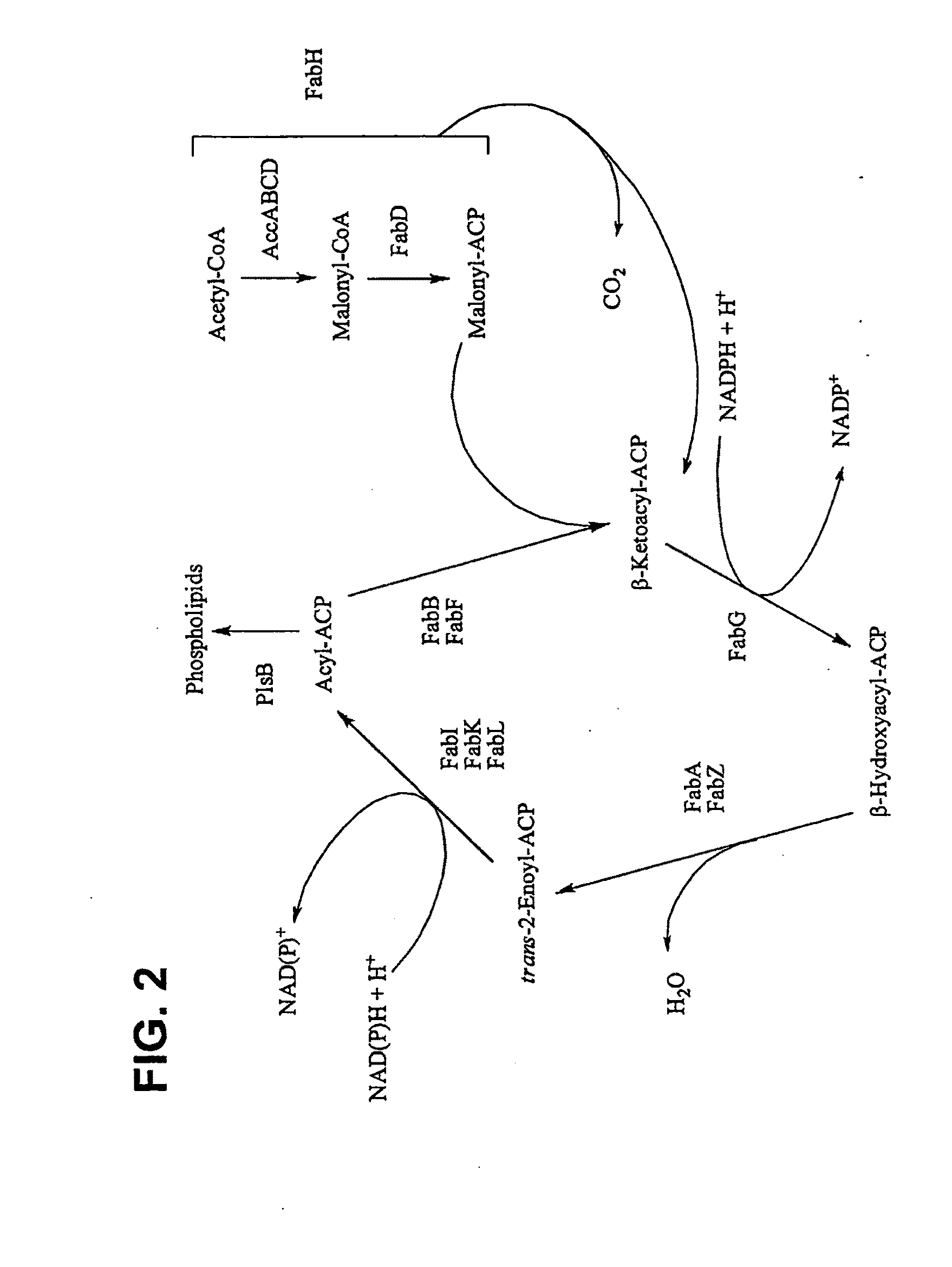Systems and methods for the production of fatty esters
a technology of applied in the field of systems and methods for producing fatty esters and fatty ester products, can solve the problems of increasing fuel sources and difficult acquisition
- Summary
- Abstract
- Description
- Claims
- Application Information
AI Technical Summary
Benefits of technology
Problems solved by technology
Method used
Image
Examples
example 1
Production Host Construction
[0359]The present example outlines various production hosts and methods of making them. An exemplary production host is E. coli. A preferred production host is E. coli with the fadE gene attenuated or deleted. An E. coli lacking the fadE gene was produced by modifying E. coli C41(DE3) from OverExpress (Saint Beauzire, France) to knock-out the fadE gene (acyl-CoA dehydrogenase).
[0360]Briefly, the fadE knock-out strain of E. coli was made using primers YafV_NotI and Ivry_Ol to amplify about 830 by upstream of fadE and primers Lpcaf_ol and LpcaR_Bam to amplify about 960 by downstream of fadE. Overlap PCR was used to create a construct for in-frame deletion of the complete fadE gene. The fadE deletion construct was cloned into the temperature-sensitive plasmid pKOV3, which contained a sacB gene for counterselection, and a chromosomal deletion of fadE was made according to the method of Link et al., J. Bact. 179:6228-6237, 1997. The resulting strain was not ca...
example 2
Additional Production Hosts
[0367]The present example outlines additional modifications that were made to various production hosts.
[0368]The following plasmids were constructed for the expression of various genes that are used in the synthesis of fatty acid derivatives. The constructs were made using standard molecular biology methods. The cloned genes were put under the control of IPTG-inducible promoters (e.g., T7, tac, or lac promoters).
[0369]The 'tesA gene (thioesterase A gene accession NP—415027 without a leader sequence (See, e.g., Cho and Cronan, J. Biol. Chem., 270:4216-9, 1995, EC: 3.1.1.5, 3.1.2.-)) of E. coli was cloned into NdeI / AvrII digested pETDuet-1 (pETDuet-1 described herein is available from Novagen, Madison, Wis.). Genes encoding for FatB-type plant thioesterases (TEs) from Umbellularia californica, Cuphea hookeriana, and Cinnamonum camphorum (Accessions: UcFatB1=AAA34215, ChFatB2=AAC49269, ChFatB3=AAC72881, CcFatB=AAC49151, respectively) were individually cloned ...
example 3
Medium Chain Fatty Esters
[0376]Alcohol acetyl transferases (AATs, EC 2.3.1.84), which are responsible for acyl acetate production in various plants, can be used to produce medium chain length fatty esters (e.g., octyl octanoate, decyl octanoate, decyl decanoate, etc.). Fatty esters, synthesized from medium chain alcohols (e.g., C6 to C8), medium chain acyl-CoA, or medium chain fatty acids (e.g., C6 to C8), have a relatively low melting point. For hexyl hexanoate has a melting point of −55° C. and octyl octanoate has a melting point of −18 to −17° C. The low melting points of these compounds make them good candidates for use as biofuels.
[0377]In this example, an SAAT gene encoding an alcohol acetyltransferase was co-expressed in production host E. coli C41(DE3, ΔfadE) with fadD from E. coli and acr1 (acyl-CoA reductase from A. baylyi ADP1). Octanoic acid was provided in the fermentation broth. This resulted in the production of octyl octanoate. Similarly, when the ester synthase gene...
PUM
| Property | Measurement | Unit |
|---|---|---|
| Fraction | aaaaa | aaaaa |
| Fraction | aaaaa | aaaaa |
| Fraction | aaaaa | aaaaa |
Abstract
Description
Claims
Application Information
 Login to View More
Login to View More - R&D
- Intellectual Property
- Life Sciences
- Materials
- Tech Scout
- Unparalleled Data Quality
- Higher Quality Content
- 60% Fewer Hallucinations
Browse by: Latest US Patents, China's latest patents, Technical Efficacy Thesaurus, Application Domain, Technology Topic, Popular Technical Reports.
© 2025 PatSnap. All rights reserved.Legal|Privacy policy|Modern Slavery Act Transparency Statement|Sitemap|About US| Contact US: help@patsnap.com



